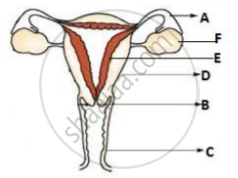Advertisements
Advertisements
प्रश्न
Differentiate between Parthenocarpy and Parthenogenesis. Give one example of each.
उत्तर १
| Parthenogenesis | Parthenocarpy |
| It is a type of reproduction in which unfertilized egg or ovule develops into a new organism. | It is a process in which unfertilized ovule develops into a seedless fruit. |
| It produces haploid organisms | It results in the production of seedless fruits. |
| It is common in both plants and animals | It is common in flowering plants. |
| It is common in both plants and animals | It is common in flowering plants |
| It commonly occurs in honeybees, rotifers, some lizards and birds. | It commonly occurs in banana, seedless watermelons, etc |
उत्तर २
In most plants, flowers need to be pollinated and fertilized to produce fruits. However, some plants can produce fruits before fertilization or without fertilization. Parthenocarpy is the process which produces fruits from unfertilized ovules in plants. Unfertilized ovules develop into fruits prior to fertilization. These fruits do not contain seeds.
Parthenogenesis is a type of reproduction commonly shown in organisms mainly by some invertebrates and lower plants. It can be described as a process in which unfertilized ovum develops into an individual (virgin birth) without fertilization. Therefore, it can be considered as a method of asexual reproduction.
It is seen in organisms like rotifers, honeybees and even some lizards and birds (turkey).
The key difference between parthenogenesis and parthenocarpy is, parthenogenesis is shown by animals and plants while parthenocarpy is shown only by plants
APPEARS IN
संबंधित प्रश्न
No two individuals are absolutely alike in a population. Why?
What is amphimixis?
Internal fertilisation occurs ______.
An embryo is made up of a single cell.
In which female reproductive organ does the embryo get embedded?
List any four steps involved in sexual reproduction .
Describe the different methods of asexual reproduction in animals.
Meiosis is an essential event in the sexual life cycle of any organism. Give two reasons.
In the sexual mode of reproduction, greater diversities are generated.
Answer the following question.
Explain the process of fertilization in humans.
Describe the histology of testis with help of labelled diagram.
Identify the labels from the given diagram.

Write an account of the seminal vesicle and bulbourethral gland in the male reproductive system.
Name an organism where cell division is itself a mode of reproduction.
Name the phenomenon where the female gamete directly develops into a new organism with an avian example.
Due to presence of which of the following chemical component, pollen grains can remain well preserved in fossil?
In sexual reproduction, offsprings resemble the parents ______.
Choose the correct answer from the options given below:
Which of the following is a post-fertilization event in flowering plants?
- Eggs of both are formed only once in a lifetime
- Both the angiosperm egg and human egg are stationary
- Both the angiosperm egg and human egg are motile transported
- Syngamy in both results in the formation of zygote
Reproduction is essentially a phenomenon that is not for survival of an individual but for the stability of a species. Justify.
Rose plants produce large, attractive bisexual flowers but they seldom produce fruits. On the other hand a tomato plant produces plenty of fruits though they have small flowers. Analyse the reasons for failure of fruit formation in rose.
Both these plants - rose and tomato - both selected by human beings for different characteristics, the rose for its flower and tomato for its fruit. Roses, being vegetatively propagated do not need to produce seeds.
